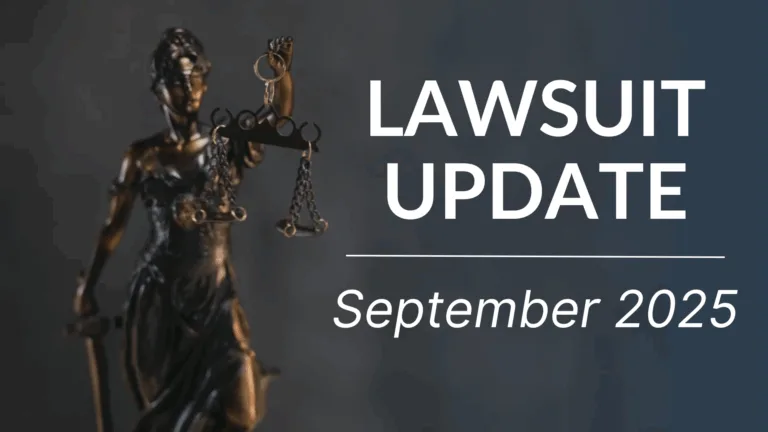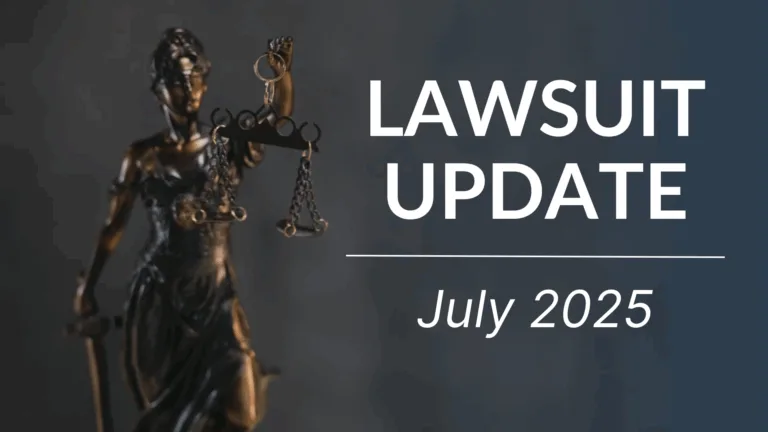If you’re a California homeowner, condo owner, or part of an HOA with Uponor AquaPEX plumbing, you’re likely aware of the growing concerns surrounding its premature failure. Since early September, there have been significant developments in the legal landscape. Here’s what you need to know, presented in an easy-to-understand blog-style format.
The Core Problem: A Refresher on AquaPEX Allegations
Before diving into the updates, let’s quickly recap why these lawsuits are surfacing. At the heart of the matter are allegations that Uponor AquaPEX (specifically certain red, white, and blue versions) is prone to premature oxidative degradation.
In simpler terms:
- The Claim: The manufacturing process (the “Engel method”) allegedly fails to evenly distribute crucial antioxidants within the pipe.
- The Impact: These pipes, despite being advertised for a 50-100 year lifespan, reportedly develop microcracks, brittleness, and sudden failures (leaks, bursts) in as little as 3-10 years.
- The Cost: Property owners are left facing expensive water damage repairs and costly repiping projects, often running into tens of thousands of dollars.
- The Allegation of Knowledge: Lawsuits also allege that Uponor was aware of these defects for years through internal testing and complaints but continued to market the product as durable.
Fall 2025 Investigation Updates
The period since early September has seen a flurry of activity, primarily in California, a state known for its strong consumer protection laws and a significant number of affected properties.
1. Increased Filings of Proposed Class Action Lawsuits:
While many law firms were previously “investigating,” several have now formally filed proposed class action lawsuits against Uponor in California federal courts. This is a crucial step from investigation to active litigation.
- Mid-September Filings: Following the initial filings earlier in 2025, several additional complaints have been lodged in various U.S. District Courts across California (e.g., Northern, Central, Southern Districts) by different law firms. These filings generally focus on behalf of California residents who own properties with Uponor AquaPEX (often specified as Wirsbo, AquaPEX, or older brands of Uponor PEX-a) installed within specific date ranges (e.g., 2010-2021).
- Consolidation Efforts: With multiple lawsuits being filed, there is a strong likelihood of these cases being consolidated into a single Multi-District Litigation (MDL) or a consolidated class action within a specific court. This streamlines the legal process and helps avoid conflicting rulings. While a formal MDL order hasn’t been issued for all Uponor PEX cases as of late 2025, motions for transfer and coordination are actively being considered by the Judicial Panel on Multidistrict Litigation. This is a typical, expected phase in widespread product defect litigation.
2. Focus on “Class Certification” and Defendant’s Responses:
The legal battles are now moving into more procedural, but critical, stages:
- Motions to Dismiss/Compel Arbitration: Uponor, Inc. and related entities are actively filing legal responses. A common strategy, as seen in cases like Clifford v. Uponor, Inc. (Southern District of California), is to file Motions to Compel Arbitration. This asks the court to force individual plaintiffs into private arbitration, thereby preventing a class action lawsuit from proceeding in open court.
- What this means for you: If a court grants arbitration, individual cases would be resolved outside of a public courtroom setting. Plaintiffs’ attorneys are vigorously opposing these motions, arguing that such arbitration clauses are not applicable or enforceable in these mass defect cases, especially for class members who may not have directly signed arbitration agreements with Uponor.
- Class Certification Hearings: The plaintiffs’ attorneys are working towards class certification. This is the process where the court decides whether a group of individuals (the “class” of affected homeowners) can be formally represented in a single lawsuit. Arguments will be made regarding whether common questions of law and fact exist among all affected California property owners. The outcome of these hearings will largely determine the future scope and structure of the litigation.
3. Continuing Investigations and Public Outreach:
Law firms like Audet & Partners, LLP, continue their investigations and public outreach campaigns. This is important for:
- Identifying More Affected Homeowners: The more homeowners who come forward, the stronger the potential evidence base for showing widespread defect.
- Gathering Evidence: Each new claimant can provide valuable information, photos, plumber reports, and repair invoices that contribute to the overall evidence against Uponor.
- Educating Consumers: These investigations help ensure that property owners are aware of their rights and the potential for financial recovery.
Why California Residents Remain a Strong Focus
The emphasis on California homeowners in these updates is deliberate:
- Strong Consumer Laws: California’s Consumer Legal Remedies Act (CLRA) and Unfair Competition Law (UCL) provide powerful tools for consumers to seek damages and protection from deceptive practices.
- Favorable Legal Precedent: As noted in the investigation notice, California courts have previously made rulings that favor consumers in related disputes with Uponor, particularly concerning attempts to force arbitration. This precedent is a significant advantage for plaintiffs in the state.
- Streamlined Class Certification: Focusing on a single state helps simplify the legal arguments and increases the likelihood of a court certifying a class, as it avoids the complexities of applying laws from multiple states.
What Could a Successful Lawsuit Mean for You?
If these class action lawsuits are successful (either through settlement or trial), eligible California property owners could potentially:
- Recover Costs: Get reimbursed for water damage repairs (drywall, insulation, flooring).
- Fund Repiping: Secure compensation for the significant expense of replacing defective Uponor AquaPEX plumbing systems.
- Relieve HOAs: Help HOAs avoid or recover from special assessments levied on members due to PEX pipe failures.
What Should You Do Now?
If you suspect or know you have Uponor AquaPEX plumbing in your California home, condo, or HOA-managed property, and have experienced failures or concerns:
- Document Everything: Keep all records: home inspection reports, plumbing invoices, repair receipts, photos/videos of leaks or damage, and any communication with builders or plumbers about your PEX system.
- Verify Your Plumbing: If unsure, consult your home inspector or a licensed plumber to identify the specific brand of PEX piping in your property. Uponor pipes are often labeled with “Uponor,” “Wirsbo,” or “AquaPEX.”
- Seek Legal Consultation: Reach out to a class action law firm specializing in product defects, such as Audet & Partners, LLP, or others actively involved in Uponor PEX litigation. Many firms offer free, confidential consultations on a contingency basis, meaning you pay nothing unless they recover compensation for you.
The legal process for class action lawsuits can be lengthy, but the increased activity and formal filings since September 2nd show that these cases are gaining momentum. By staying informed and taking proactive steps, you can help protect your rights as a property owner.
Disclaimer: This article provides general information for consumer awareness and is not legal advice. If you believe you have a claim, you should consult directly with a qualified attorney. Contact Audet & Partners today to request a free consultation.


